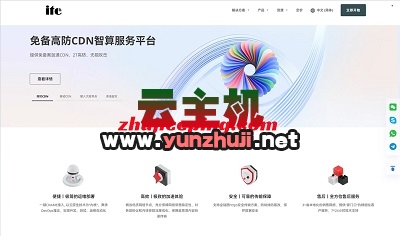Netty 是一个基于 Java 的异步事件驱动的网络应用框架,旨在快速开发可维护的高性能协议服务器和客户端,本文将详细介绍如何使用 Netty 搭建一个能够处理图片上传和下载请求的 HTTP 服务器。
一、准备工作
我们需要创建一个 Maven 项目,并在pom.xml 文件中添加 Netty 依赖,这里我们使用 Netty 的稳定版本 4.1.52.Final:
<dependency>
<groupId>io.netty</groupId>
<artifactId>netty-all</artifactId>
<version>4.1.52.Final</version>
</dependency> 二、服务端启动类
服务端的启动类主要负责初始化线程模型、配置网络参数并绑定端口,以下是一个简单的示例:
import io.netty.bootstrap.ServerBootstrap;
import io.netty.buffer.Unpooled;
import io.netty.channel.*;
import io.netty.channel.nio.NioEventLoopGroup;
import io.netty.channel.socket.SocketChannel;
import io.netty.channel.socket.nio.NioServerSocketChannel;
import io.netty.handler.codec.http.*;
import io.netty.util.CharsetUtil;
import java.net.InetSocketAddress;
public class ImageHttpServer {
public void start(int port) throws Exception {
EventLoopGroup bossGroup = new NioEventLoopGroup(); // 主线程组
EventLoopGroup workerGroup = new NioEventLoopGroup(); // 从线程组
try {
ServerBootstrap bootstrap = new ServerBootstrap(); // 创建引导器
bootstrap.group(bossGroup, workerGroup)
.channel(NioServerSocketChannel.class) // 推荐 Netty 服务端采用 NioServerSocketChannel 作为 Channel 的类型
.localAddress(new InetSocketAddress(port))
.childHandler(new ChannelInitializer<SocketChannel>() {
@Override
protected void initChannel(SocketChannel ch) throws Exception {
ch.pipeline()
.addLast("codec", new HttpServerCodec()) // HTTP 编解码
.addLast("compressor", new HttpContentCompressor()) // HttpContent 压缩
.addLast("aggregator", new HttpObjectAggregator(65536)) // HTTP 消息聚合
.addLast("handler", new ImageHttpServerHandler()); // 自定义处理器
}
}).childOption(ChannelOption.SO_KEEPALIVE, true); // 设置为 true 代表启用了 TCP SO_KEEPALIVE 属性,TCP 会主动探测连接状态,即连接保活
ChannelFuture f = bootstrap.bind().sync(); // 绑定端口并等待同步完成
System.out.println("Image HTTP Server started, listening on " + port);
f.channel().closeFuture().sync(); // 关闭通道并释放所有资源
} catch (Exception e) {
e.printStackTrace();
} finally {
workerGroup.shutdownGracefully(); // 优雅地关闭工作线程组
bossGroup.shutdownGracefully(); // 优雅地关闭主线程组
}
}
public static void main(String[] args) throws Exception {
new ImageHttpServer().start(8080); // 设置监听端口为 8080
}
} 三、自定义处理器
在自定义处理器中,我们将处理 HTTP 请求,并根据请求类型(GET 或 POST)来响应相应的图片数据,以下是一个简单的示例:
import io.netty.buffer.ByteBuf;
import io.netty.buffer.Unpooled;
import io.netty.channel.ChannelFutureListener;
import io.netty.channel.ChannelHandlerContext;
import io.netty.channel.SimpleChannelInboundHandler;
import io.netty.handler.codec.http.*;
import io.netty.util.CharsetUtil;
import java.io.File;
import java.io.FileInputStream;
import java.io.IOException;
import java.io.RandomAccessFile;
import java.net.URLDecoder;
import java.nio.channels.FileChannel;
public class ImageHttpServerHandler extends SimpleChannelInboundHandler<FullHttpRequest> {
private static final String IMAGE_DIRECTORY = "path/to/your/image/directory"; // 指定图片存储目录
@Override
protected void channelRead0(ChannelHandlerContext ctx, FullHttpRequest msg) throws Exception {
if (HttpUtil.is100ContinueExpected(msg)) {
send100Continue(ctx);
}
// 处理 GET 请求,返回图片文件内容
if (HttpUtil.isGet(msg)) {
String uri = msg.uri();
if (uri.startsWith("/images/")) {
String imagePath = IMAGE_DIRECTORY + URLDecoder.decode(uri.substring(7), "UTF-8");
File imageFile = new File(imagePath);
if (imageFile.exists() && !imageFile.isDirectory()) {
sendImage(ctx, imageFile);
} else {
sendError(ctx, NOT_FOUND);
}
} else {
sendError(ctx, FORBIDDEN);
}
} else if (HttpUtil.isPost(msg)) {
// 处理 POST 请求,保存上传的图片文件
HttpPostRequestDecoder decoder = new HttpPostRequestDecoder(new DefaultHttpDataFactory(false), msg);
FileUpload fileUpload = null;
while (decoder.hasNext()) {
InterfaceHttpData data = decoder.next();
if (data instanceof FileUpload) {
fileUpload = (FileUpload) data;
break;
}
}
if (fileUpload != null) {
String fileName = fileUpload.getFilename();
File directory = new File(IMAGE_DIRECTORY);
if (!directory.exists()) {
directory.mkdirs();
}
File targetFile = new File(directory, fileName);
try (FileChannel fileChannel = new FileOutputStream(targetFile).getChannel();
FileChannel sourceChannel = new RandomAccessFile(fileUpload.getFile(), "r").getChannel()) {
sourceChannel.transferTo(0, sourceChannel.size(), fileChannel);
} catch (IOException e) {
e.printStackTrace();
sendError(ctx, BAD_REQUEST);
return;
}
sendResponse(ctx, OK);
} else {
sendError(ctx, BAD_REQUEST);
}
} else {
sendError(ctx, METHOD_NOT_ALLOWED);
}
}
private static void send100Continue(ChannelHandlerContext ctx) {
FullHttpResponse response = new DefaultFullHttpResponse(HTTP_1_1, CONTINUE);
ctx.write(response);
}
private static void sendError(ChannelHandlerContext ctx, HttpResponseStatus status) {
FullHttpResponse response = new DefaultFullHttpResponse(HTTP_1_1, status);
ctx.writeAndFlush(response).addListener(ChannelFutureListener.CLOSE);
}
private static void sendResponse(ChannelHandlerContext ctx, HttpResponseStatus status) {
FullHttpResponse response = new DefaultFullHttpResponse(HTTP_1_1, status);
ctx.writeAndFlush(response).addListener(ChannelFutureListener.CLOSE);
}
private static void sendImage(ChannelHandlerContext ctx, File imageFile) throws IOException {
byte[] content = new byte[(int) imageFile.length()];
try (FileInputStream fis = new FileInputStream(imageFile)) {
fis.read(content);
}
DefaultFullHttpResponse response = new DefaultFullHttpResponse(HTTP_1_1, OK);
response.headers().set(HttpHeaderNames.CONTENT_TYPE, "image/jpeg");
response.headers().set(HttpHeaderNames.CONTENT_LENGTH, content.length);
response.content().writeBytes(content);
ctx.writeAndFlush(response).addListener(ChannelFutureListener.CLOSE);
}
} 四、测试与验证
启动服务器后,可以使用浏览器或 curl 命令来测试图片上传和下载功能。
上传图片:使用表单提交方式上传图片到/images/ 目录。
下载图片:访问http://localhost:8080/images/{imageName} 以下载指定图片。
五、FAQs问答环节
Q1: Netty中的HttpRequest和HttpResponse由哪些部分组成?
A1: Netty中的HttpRequest由请求行、请求头和请求体三部分组成,HttpResponse由状态行、消息报头和响应正文三部分组成,具体如下表所示:
| 组件 | 描述 |
| HttpRequest | |
| 请求行 | 以一个方法符开头,以空格分开,后面跟着请求的URI和协议的版本,格式为:Method Request-URI HTTP-Version CRLF,Method表示请求方法,Request-URI是一个统一资源标识符,HTTP-Version表示请求的HTTP协议版本,CRLF表示回车和换行。 |
| 请求头 | 包含多个键值对,用于传递客户端信息和服务器端配置。 |
| 请求体 | 可选部分,包含请求的主体数据,如POST请求中的表单数据。 |
| HttpResponse | |
| 状态行 | 格式为:HTTP-Version Status-Code Reason-Phrase CRLF,其中HTTP-Version表示HTTP协议的版本,Status-Code表示服务器返回的响应状态码。 |
| 消息报头 | 包含多个键值对,用于传递服务器端信息和客户端配置。 |
| 响应正文 | 可选部分,包含响应的主体数据,如HTML页面、图片等。 |
Q2: Netty如何实现图片的上传和下载?
A2: Netty通过自定义处理器来实现图片的上传和下载,对于上传请求,Netty接收客户端发送的图片数据并保存到指定目录;对于下载请求,Netty读取指定目录下的图片文件并将其内容作为HTTP响应返回给客户端,具体实现细节如上文所述。

 云主机测评网
云主机测评网


















最新评论
本站CDN与莫名CDN同款、亚太CDN、速度还不错,值得推荐。
感谢推荐我们公司产品、有什么活动会第一时间公布!
我在用这类站群服务器、还可以. 用很多年了。